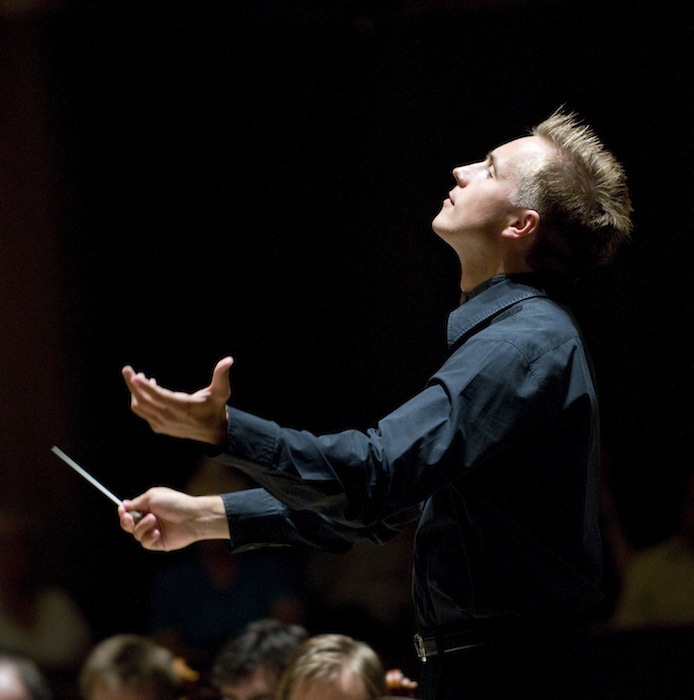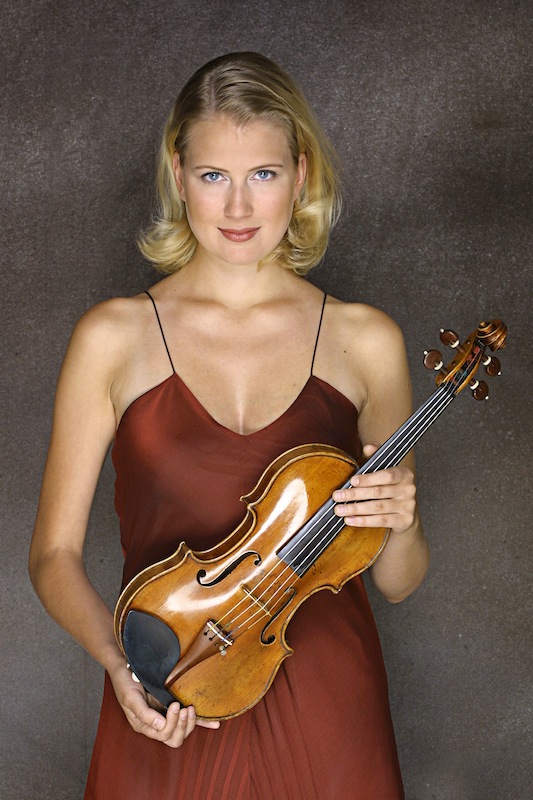Petrenko and Vähälä shine in a Houston Symphony program with Italian flair

Vasily Petrenko conducted the Houston Symphony Saturday night. File photo: Mark McNulty.
The conductor, Vasily Petrenko, is Russian, and the soloist, violin player Elina Vähälä, is Finnish. But the program they led with the Houston Symphony on Saturday at Jones Hall, called “The Pines of Rome,” sported a distinctly Italian — and Italian-American — accent, with works by Giuseppe Verdi, Ottorino Respighi and John Corigliano.
In her Houston Symphony debut, Vähälä performed Corigliano’s The Red Violin, a concerto for violin and orchestra based on music from the movie of the same name. With her playing, Vähälä proved that Finland produces more than just outstanding conductors.
Corigliano, an Italian-American and son of a former New York Philharmonic concertmaster, is one of America’s most successful and awarded composers. From the eclectic and farcical opera The Ghosts of Versailles to the deeply personal Symphony No. 1, he navigates all genres and forms with ease, showing an innate understanding of instruments and voices.
The first movement, “Chaconne,” had dozens of performances to its credit before being incorporated into this four-movement concerto. The 17th-century variation form built on a short repeated bass line, or ground bass was popular when the mythical Red Violin was made, and reflected the Baroque duality of intellectual order and free expression. Corigliano’s chaconne is based on seven chords with expanding intervals of varying dissonance, allowing for a late-twentieth century idiom. This duality creates a compelling musical tension where the solo violin strives to break free of the inherent restrictions of the form.

Elina Vähälä
Vähälä’s interpretation of the chaconne was thoroughly committed. She navigated the difficult double-stops, including a cadenza, with security and projected the expressive intensity of the soaring melodic lines. In terms of both her playing and the composition as a whole, this was the most successful movement.
The ensuing movement, “Pianissimo Scherzo,” has four beats to the bar rather than the more traditional three for a scherzo. Only distantly related to the movie music, it was the least successful movement, seeming more like an add-on designed to formalize the concerto. Balance issues surfaced between the soloist and orchestra, due mostly to a lack of clarity in Vähälä’s articulations, as if there were not enough rosin on the bow hair.
The third movement pairs a flute-like violin tone (flautando) with an actual alto flute, whereas in the fourth movement, the soloist and strings are instructed to play with a crunched sound, as well as col legno — hitting the wood of the bow on the string. The end of the fourth movement brings back the chaconne, taking the piece full circle. While virtually any composition by Corigliano is of musical importance, it remains to be seen if the complete concerto will remain in the repertoire.
Petrenko led the Houston Symphony in a rhythmically defined performance of the Corigliano work, using precise cues and incisive gestures — in marked contrast to his handling of the evening’s opener, Verdi’s Overture to Un giorno di Regno (King for a Day), where he injected character as well as beating time. Petrenko maintained an upbeat tempo throughout the Overture, with no self-conscious slowing at the end.
The second half of the program was devoted to two well-known symphonic poems of Ottorino Respighi, The Fountains of Rome and The Pines of Rome. Highly cinematic in nature, both works describe locations in and around Rome in brilliant orchestrations.
Petrenko had complete control of the large instrumental forces, eliciting a vast range of colors and dynamics. The balance within the string section was exceptional, whether the music required full dynamics or an impressionistic transparency. Divided lower strings projected beautifully when needed, and Petrenko maintained the brilliant focus of the violins. Violin solos by guest concertmaster David Radzynski, concertmaster of the Israel Philharmonic, were played with a beautiful sound and impeccable intonation.
The Houston Symphony woodwinds continued this season’s excellence with outstanding playing across the board. Oboist Jonathan Fischer began The Fountains of Rome with an extraordinary range of sound and flexibility of phrasing, setting the stage for an exceptional performance. He was joined by wonderful English horn and cello solos, among many others.
At the beginning of The Pines of Rome, Petrenko managed to convey the character of children at play in the Villa Borghese, complete with a musical razzing. “Pines near a catacomb” features an offstage trumpet solo, played with haunting and touching beauty by Mark Hughes. “The Pines of the Janiculum” has an extended clarinet solo, wonderfully spun out with legato phrasing by Mark Nuccio.
“The Pines of the Appian Way” begins with distant drums and the muffled wails of those long since crucified. Beginning with French horns, it grows in volume and intensity as imaginary Roman legions march triumphantly. The Houston Symphony brass section, supported by multiple percussion and offstage trumpets and trombones, was nothing short of spectacular with one of the greatest endings in music. Petrenko, despite his relative youth, showed himself to be a musically mature conductor of enormous gifts.


